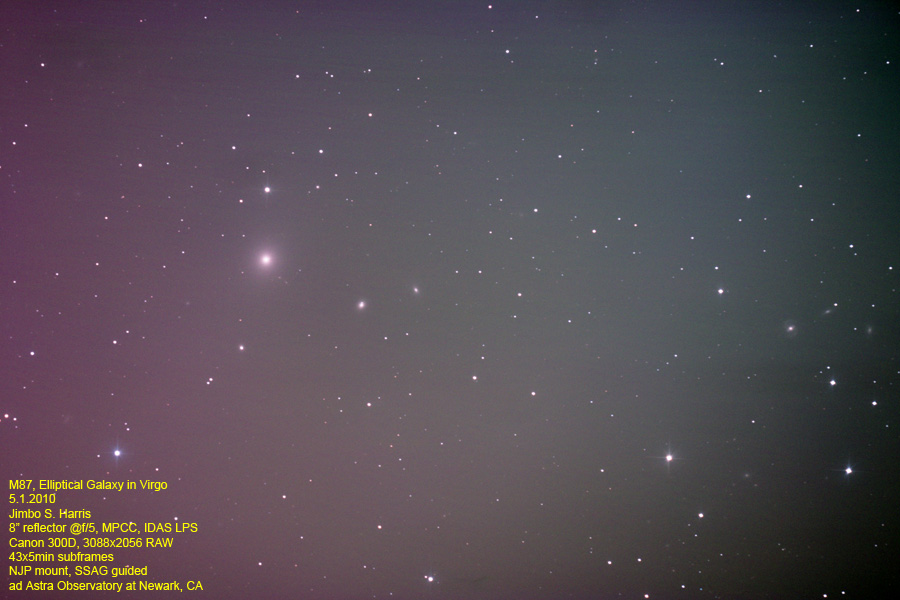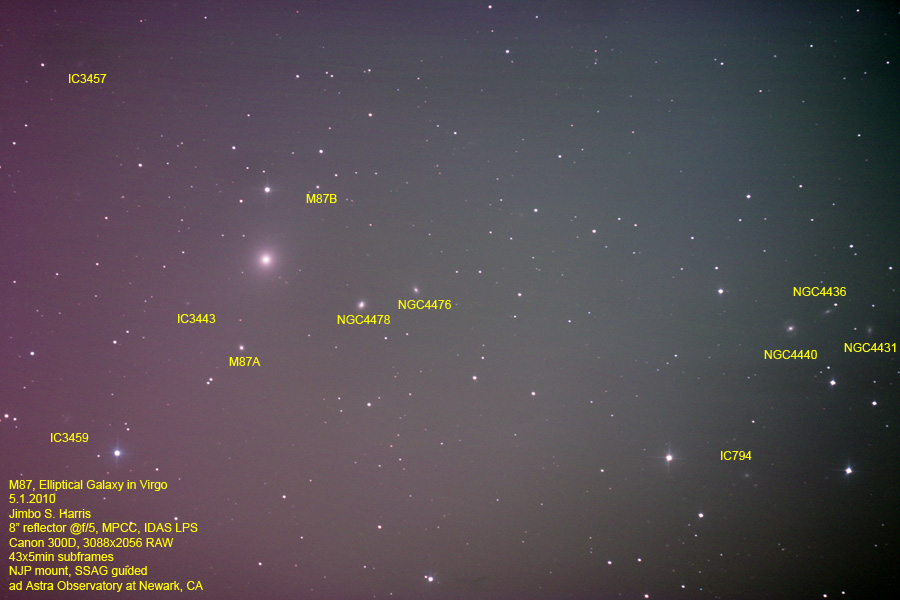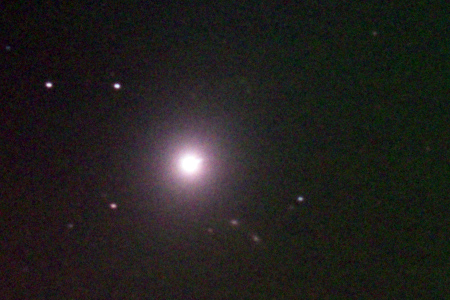I have avoided the Virgo Galaxies for years. The reasons are many, but chief among them is that a lot of the Virgo galaxies are elliptical, which essentially means that they look like almost nothing when you photograph them. Spirals are much more photogenic, and as should be clear if you’ve followed my target selection in this blog over the years, I’m in it for photogenic objects, not so much for a scientific exploration or any sort of “full collection” of anything.
OK, enough said. I’ve covered all that before.
M87 is a gigantic elliptical galaxy, maybe the largest object in the Virgo Cluster (?). It’s also famous because it has a jet of material coming out of its core. Hubble shot an excellent photo of this jet at one point or another. I wanted to know whether I could capture it, too.
Also, since I know that there are dozens of galaxies around the area, I wanted to start to get comfortable in Virgo, and in particular I wanted to see if I could find any spirals worth shooting over there.
So, off to M87 I went. I used Elbrus, my new “plate solving” software, to refine my GOTOs in the area. All I can say is that Elbrus is a game-changer, when it’s configured properly. That will come with time, but at the moment, every new object means I have to manually calibrate 3 nearby stars before it can do anything. Once it’s on, it’s really on.
I used my newfound information about exactly where I was pointing to pull in a small galaxy cluster that would have otherwise been off the edge of the frame to the west. Nifty!
I had the mount “bend over backwards” to pick up the target, so that I could get maximum imaging time on it. I ended up being able to shoot for nearly 4 hours before the mount hit its safety limit and stopped tracking (just like it was supposed to!).
This is M87, 43x5m subframes = 3h 35m total exposure time. I was using 5m subframes because I’m not shooting in Ha. Note that I also have a gnarly color gradient. Someday I will learn to process images better. (:
This is an annotated version of the image, showing all the other faint fuzzies I picked up — only NGC4440 is noticeably a spiral to my eye:
…and finally, here is a full-zoom crop of M87 and environs. You can clearly see the beginning of the jet going off to the right, near M87’s core. Also note that there are 2 little baby galaxies right below M87. These were not marked on either of the two star charts I used to annotate the image. Maybe I will spend some more time looking up their designations. Otherwise, they become “The Harris Galaxies”. (:
Everything worked right last night. 4026 punches out 5m subframes like it’s bored. The new safety limits are working great. The plate solving makes my heart skip when I watch it go. Even the image processing, despite ending up with a gradient, went pretty well.
I’m happy.
More Galaxy-hunting in Virgo to commence.




MOST COMMENTED
Observatory
Observatory 2.0 – Time has come today!
General / Maintenance
First Light, a deeper look
Mount / Observatory / Telescope
Observatory 2.0 – Result!
Observatory
Observatory 2.0 – The Pier goes in
Gear / General / Maintenance
Martin Farmer Wormblock installation notes
Deep Sky / Long Exposure Photography
NGC2244, The Rosette Nebula
Deep Sky / Long Exposure Photography
Another beautiful night.